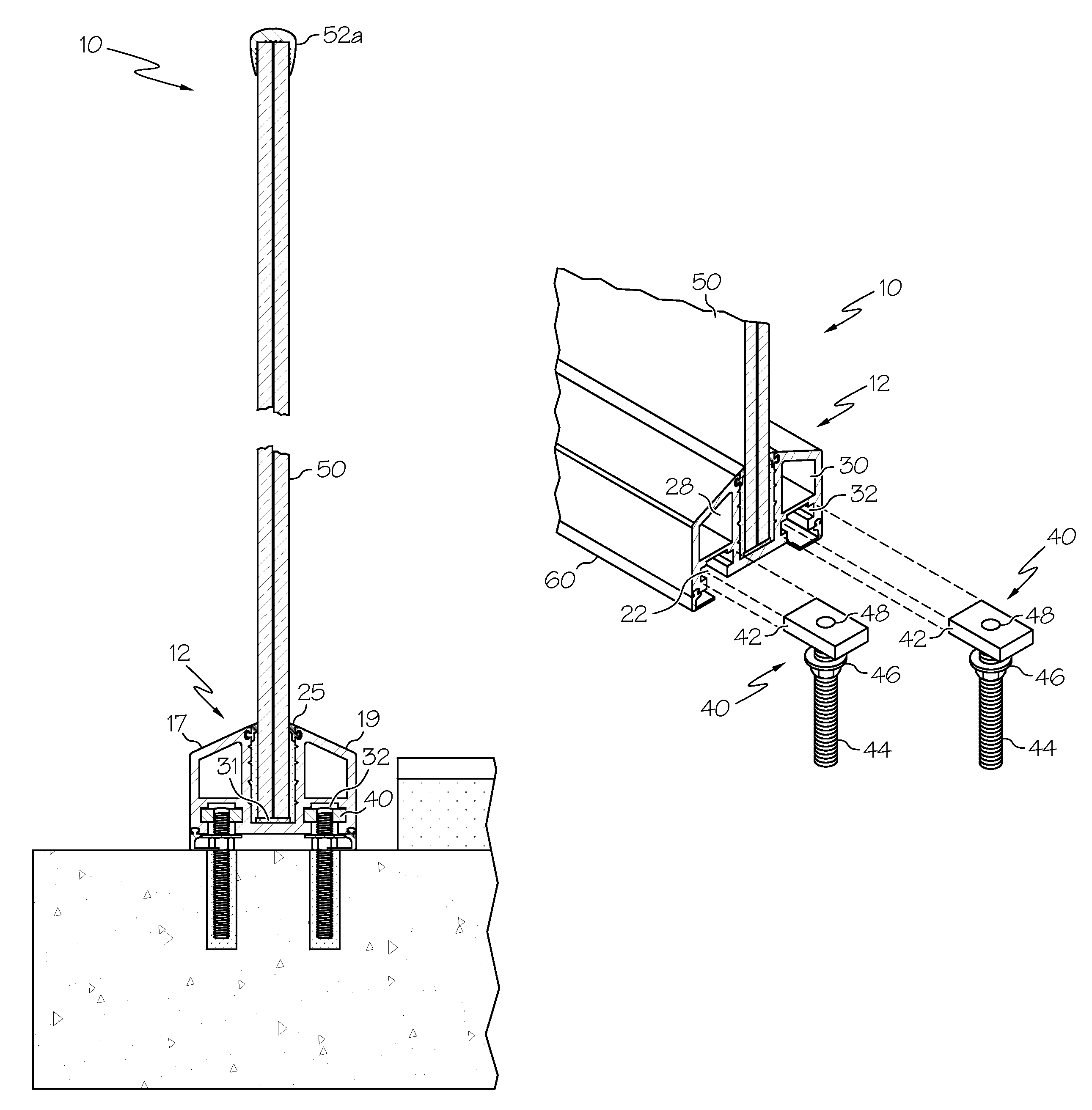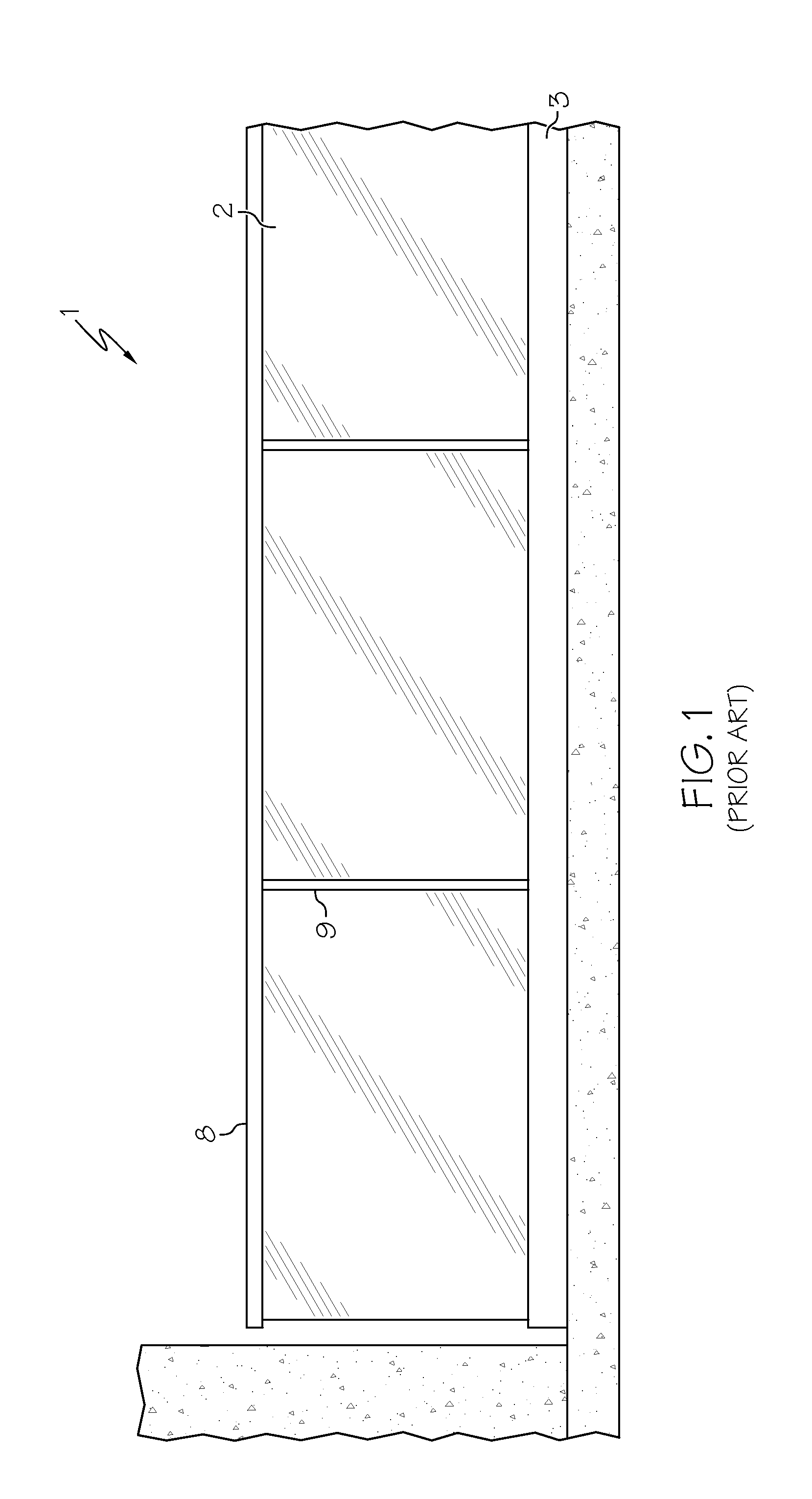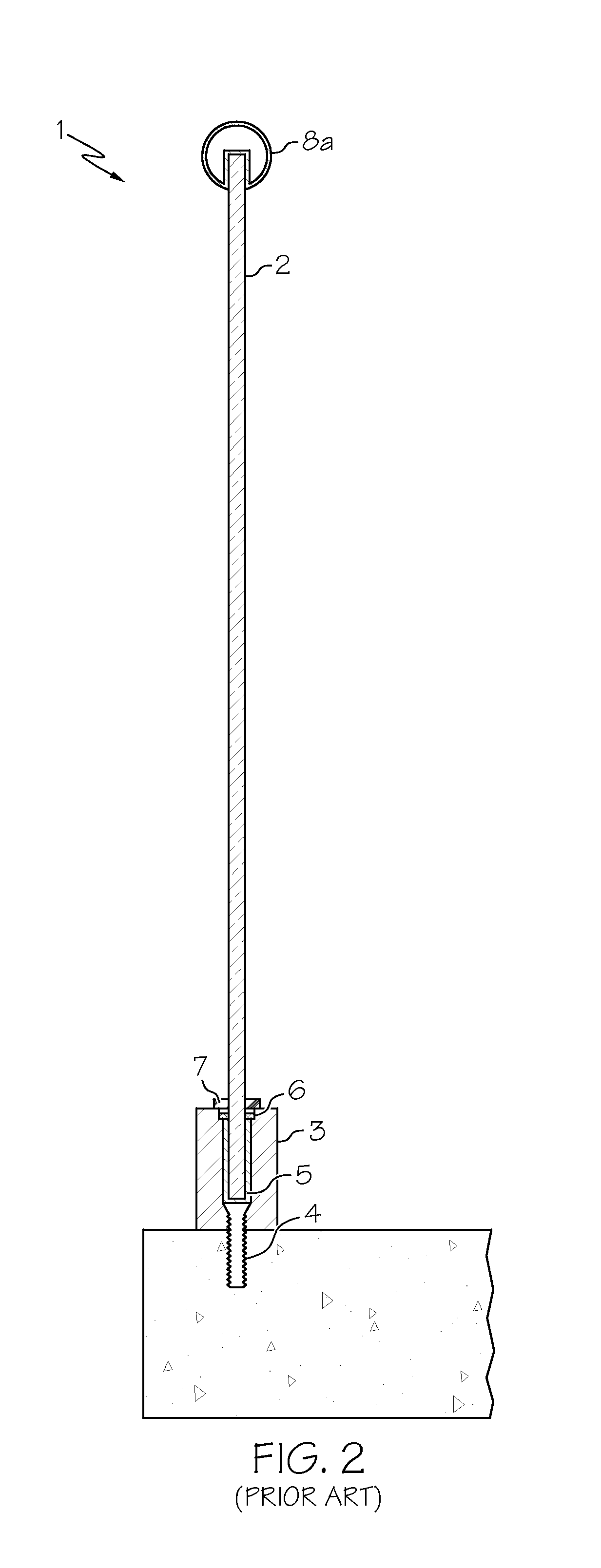Glass railing anchor system
a technology of glass railings and anchors, applied in the direction of protective buildings/shelters, human health protection, climate sustainability, etc., can solve the problems of not properly shimmed or reinforced, not designed for high-wind hurricane zones (hvhz) or other areas susceptible, etc., to achieve the effect of preventing bending and stress along the center line, preventing bending and stress
- Summary
- Abstract
- Description
- Claims
- Application Information
AI Technical Summary
Benefits of technology
Problems solved by technology
Method used
Image
Examples
Embodiment Construction
[0023]With reference to the drawings, FIGS. 5-10D depict the preferred and alternative embodiments of the instant invention which is generally referenced as a glass railing anchor system and, or by numeric character 10. The instant invention 10 comprises a glass railing anchor system that is designed to withstand the forces realized in high velocity hurricane zones (“HVHZ”) and comparable high wind zones. The glass railing anchor system 10 is adapted for installation on balconies of high rises, as shown in FIG. 5. The instant invention 10 may also be installed on balconies of buildings in high wind zones, such as on the beach or on decks. Referring to FIG. 5, the glass railing anchor system 10 generally comprises an aluminum base 12 and at least one panel 50 supported by the base 12, and may also include a variety of caps 52. The instant invention 10 is described in more detail herein below.
[0024]With reference to FIGS. 5 to 10D, the glass railing anchor system 10 comprises an elong...
PUM
 Login to View More
Login to View More Abstract
Description
Claims
Application Information
 Login to View More
Login to View More - R&D
- Intellectual Property
- Life Sciences
- Materials
- Tech Scout
- Unparalleled Data Quality
- Higher Quality Content
- 60% Fewer Hallucinations
Browse by: Latest US Patents, China's latest patents, Technical Efficacy Thesaurus, Application Domain, Technology Topic, Popular Technical Reports.
© 2025 PatSnap. All rights reserved.Legal|Privacy policy|Modern Slavery Act Transparency Statement|Sitemap|About US| Contact US: help@patsnap.com



